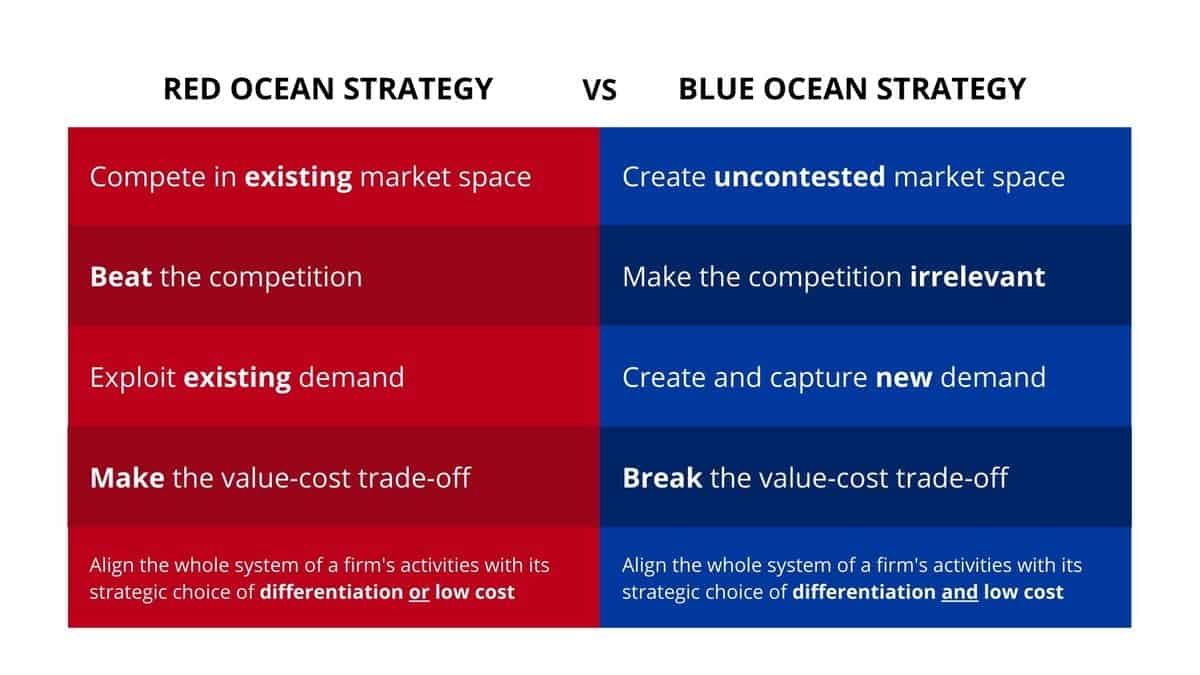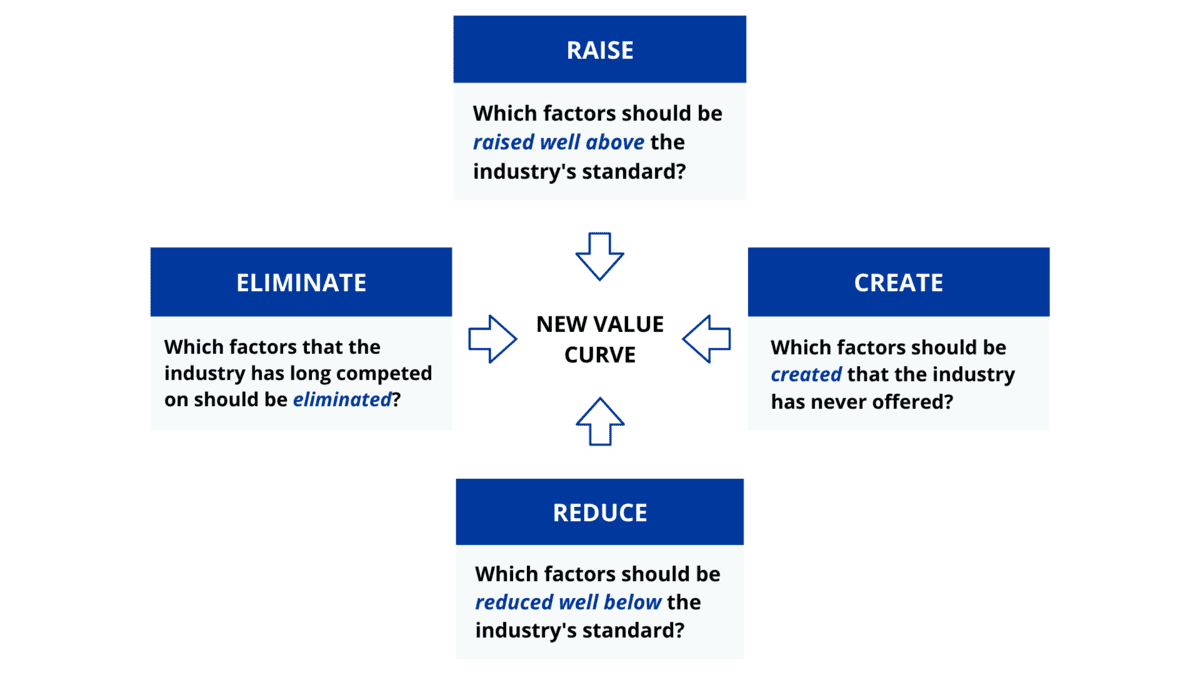Understanding Blue Ocean Strategy
In today’s competitive business landscape, Blue Ocean Strategy has emerged as a powerful framework for companies seeking to innovate and differentiate themselves. Unlike traditional strategies that focus on battling competitors in saturated marketsoften referred to as “red oceans”Blue Ocean Strategy encourages businesses to create new market spaces, or “blue oceans,” where they can operate without direct competition. This article explores the essential aspects of Blue Ocean Strategy, its core principles, and practical applications.

What is Blue Ocean Strategy?
Definition of Blue Ocean Strategy
Blue Ocean Strategy is a marketing theory introduced by W. Chan Kim and Renée Mauborgne in their seminal book, Blue Ocean Strategy. This strategy emphasizes the importance of innovation and value creation to unlock new demand in unexplored market spaces. Instead of competing with existing companies for market share, businesses are encouraged to explore uncharted territories that offer opportunities for growth and profitability.
Origin and Development of Blue Ocean Strategy
The concept originated from research conducted by Kim and Mauborgne, who analyzed over 150 strategic moves across various industries and found that lasting success was often derived from creating new market spaces rather than competing in existing ones. Their research led to the development of the Blue Ocean Strategy framework, which has since been adopted by numerous organizations worldwide.
The Core Principles of Blue Ocean Strategy
Blue Ocean Strategy is underpinned by several core principles that guide businesses in identifying and creating new market spaces.
Value Innovation
At the heart of Blue Ocean Strategy is value innovation, which focuses on maximizing value for both the company and its customers. By aligning innovation with utility, price, and cost positions, businesses can create products or services that meet customer needs while reducing costs. This approach leads to enhanced customer satisfaction and competitive advantage.
Creating Uncontested Market Space
Unlike traditional market strategies that focus on outperforming competitors, Blue Ocean Strategy aims to create uncontested market space. This involves identifying new customer segments or developing new offerings that meet existing customer needs in innovative ways. By doing so, companies can achieve significant growth without direct competition.
Differentiation and Low Cost
Blue Ocean Strategy emphasizes the balance between differentiation and low cost. Companies must develop offerings that stand out from competitors while keeping costs manageable. This dual focus enables businesses to capture a broader audience and create a sustainable competitive advantage.
The Blue Ocean Strategy Framework
One of the key tools in Blue Ocean Strategy is the Four Actions Framework, which helps companies reconstruct market boundaries and create new value propositions.
The Four Actions Framework
The Four Actions Framework consists of four key components: Eliminate, Reduce, Raise, and Create. This framework encourages businesses to rethink their offerings and the industry landscape.

- Eliminate: Identify factors that the industry takes for granted but can be eliminated. This allows businesses to focus on what truly matters to customers.
- Reduce: Determine which factors should be reduced well below the industry standard. This can help cut unnecessary costs while maintaining customer satisfaction.
- Raise: Recognize which factors should be raised above the industry standard. By enhancing certain aspects of their offerings, companies can create greater value for their customers.
- Create: Explore new factors that the industry has never offered. This is where true innovation happens, allowing businesses to develop unique products or services that set them apart from competitors.
Practical Examples of Blue Ocean Strategy
To understand the application of Blue Ocean Strategy, lets examine a few successful examples:
Cirque du Soleil
Cirque du Soleil transformed the circus industry by creating a unique blend of acrobatics, theater, and music. By eliminating costly elements like animal acts and combining artistic performances with a captivating narrative, Cirque du Soleil created a completely new entertainment experience that attracted a different audience segment.
Yellow Tail Wine
The introduction of Yellow Tail wine revolutionized the wine industry by simplifying the selection process for consumers. By eliminating complex terminology and focusing on fun, approachable branding, Yellow Tail appealed to a broader audience, making wine more accessible to casual drinkers.
Apples iTunes
Apple’s iTunes platform disrupted the music industry by allowing users to purchase individual songs rather than entire albums. This innovative approach addressed customer needs for convenience and choice, creating a blue ocean in the digital music space.
Implementing Blue Ocean Strategy in Your Business
Steps for Developing a Blue Ocean Strategy
- Identify Your Current Market: Assess your existing market and understand where you stand in relation to competitors.
- Explore New Market Opportunities: Conduct research to identify potential blue oceans where unmet customer needs exist.
- Develop a Value Proposition: Create a compelling value proposition that outlines how your offering meets customer needs uniquely and effectively.
By following these steps, businesses can strategically navigate towards uncharted waters, capitalizing on opportunities for growth and innovation.
Challenges and Considerations
While Blue Ocean Strategy offers immense potential, it also comes with challenges:
- Risks of Entering a Blue Ocean: Venturing into uncharted markets involves uncertainties and risks. Companies must conduct thorough research to mitigate these risks effectively.
- Overcoming Organizational Resistance: Shifting from traditional competitive strategies to Blue Ocean thinking may face internal resistance. Effective change management practices are essential for a successful transition.
As you consider the advantages and challenges of Blue Ocean Strategy, keep in mind that innovation and adaptability are crucial for sustaining success in today’s dynamic business environment.
Conclusion and Future Outlook
In summary, Blue Ocean Strategy provides a compelling framework for businesses to innovate, differentiate, and thrive in new markets. As companies continue to navigate the complexities of modern business landscapes, adopting a Blue Ocean approach can unlock unprecedented growth and opportunities.
Stay tuned for the second half of this article, which will delve deeper into the future of Blue Ocean Strategy and frequently asked questions surrounding this transformative business model.
Future Outlook for Blue Ocean Strategy
As we look ahead, the relevance of Blue Ocean Strategy continues to grow in an increasingly interconnected and competitive global market. Businesses must adapt to changing consumer preferences, technological advancements, and the rise of new market entrants. Heres how organizations can leverage Blue Ocean Strategy for sustainable success.
Trends Influencing Blue Ocean Strategy
- Digital Transformation: The rapid advancement of technology is creating new opportunities for businesses to innovate. Companies that embrace digital tools can redefine their value propositions and explore new customer segments.

-
Sustainability and Social Responsibility: Increasing consumer awareness of environmental issues means businesses must integrate sustainability into their strategies. Companies that create eco-friendly products or services can tap into the growing market of environmentally-conscious consumers.
-
Globalization: As markets become more interconnected, businesses can access international blue oceans by tailoring their offerings to meet the needs of diverse customer bases.
Overcoming Obstacles to Blue Ocean Strategy Implementation
Implementing Blue Ocean Strategy is not without its challenges. Companies must be prepared to address potential obstacles:
- Resource Allocation: Shifting resources from traditional markets to new opportunities can be daunting. Companies need to ensure that they maintain a balance between pursuing innovative ventures and sustaining their core operations.
- Market Research: Conducting thorough market research is essential to identify viable blue oceans. Companies should invest in understanding customer needs, preferences, and trends to inform their strategic decisions.
- Cultural Shift: Fostering a culture of innovation is crucial for the success of Blue Ocean Strategy. Leadership must encourage risk-taking and creativity among employees to drive successful implementation.
Frequently Asked Questions (FAQs)
What is Blue Ocean Strategy?
Blue Ocean Strategy refers to the strategic approach of creating new, uncontested market spaces, or “blue oceans,” as opposed to competing in existing saturated markets, or “red oceans.” This strategy focuses on value innovation to unlock new demand and growth opportunities.
How do I identify a blue ocean opportunity?
To identify a blue ocean opportunity, businesses should conduct thorough market research to understand customer needs and preferences. This may involve:
- Analyzing existing market segments
- Exploring emerging trends
- Identifying unmet customer needs
Can small businesses implement Blue Ocean Strategy?
Absolutely! Small businesses can successfully implement Blue Ocean Strategy by focusing on niche markets or creating unique value propositions that differentiate them from competitors. Innovation and adaptability are key components for any organization, regardless of size.
What are some common mistakes in Blue Ocean Strategy?
- Neglecting Market Research: Failing to conduct adequate research can lead to misidentifying potential blue oceans.
- Overlooking Execution: It’s essential to ensure that the strategic vision is effectively translated into actionable steps and that resources are allocated accordingly.
- Ignoring Customer Feedback: Engaging with customers and gathering feedback is vital for refining offerings and ensuring that they meet market demands.
How can I ensure the sustainability of a blue ocean?
To ensure the sustainability of a blue ocean, companies should:
- Continuously monitor market trends and consumer preferences
- Invest in ongoing innovation and improvement
- Foster a culture of agility and adaptability within the organization
Conclusion
In conclusion, Blue Ocean Strategy offers a transformative approach for businesses seeking to innovate and thrive in todays complex and rapidly evolving marketplace. By focusing on value innovation and creating new market spaces, organizations can unlock significant growth opportunities and build sustainable competitive advantages.
Whether you’re a startup or an established enterprise, embracing the principles of Blue Ocean Strategy can lead to profound changes in your business trajectory. As you embark on your journey to explore blue oceans, remember to stay agile, customer-focused, and open to new ideas. The future of your business may very well depend on your ability to navigate the uncharted waters of innovation.

Explore more about Blue Ocean Strategy and its practical applications through resources like Harvard Business Review and Blue Ocean Strategy. Embrace the journey towards innovation and watch your business flourish in the blue ocean!

